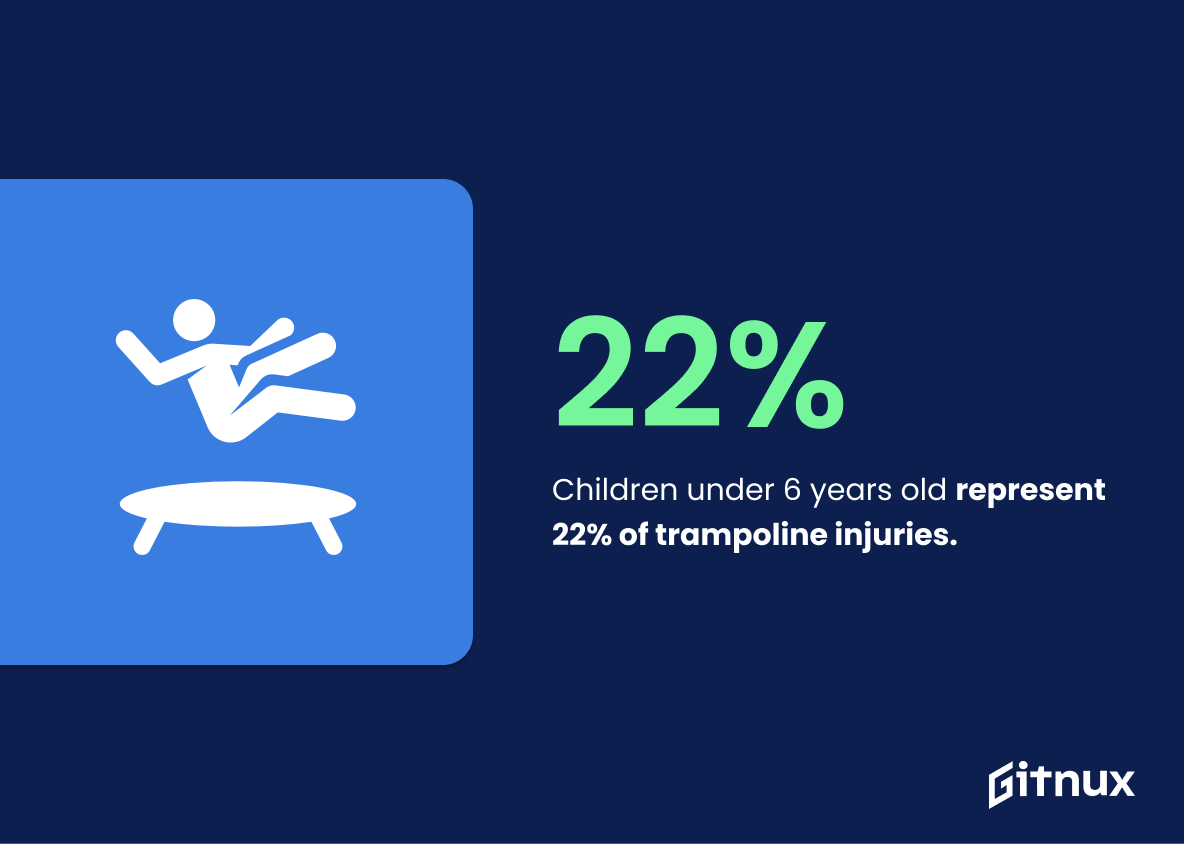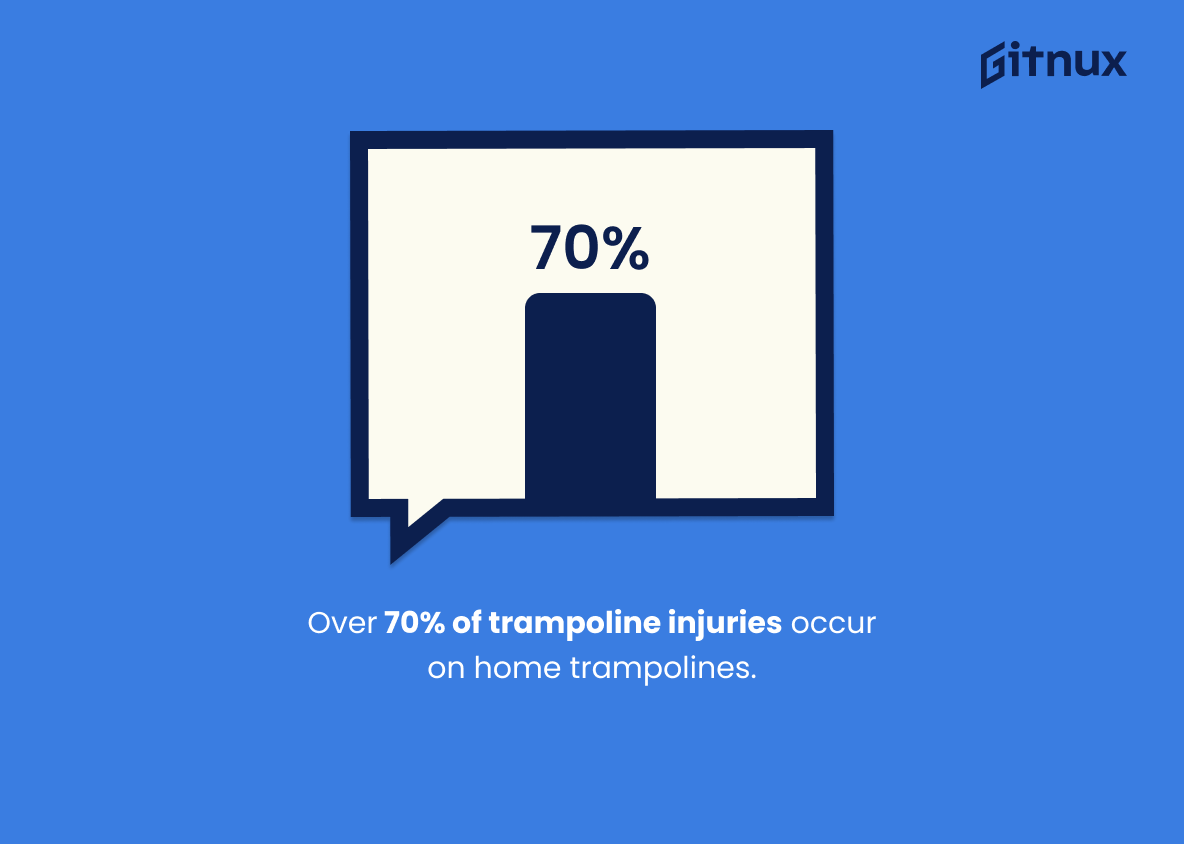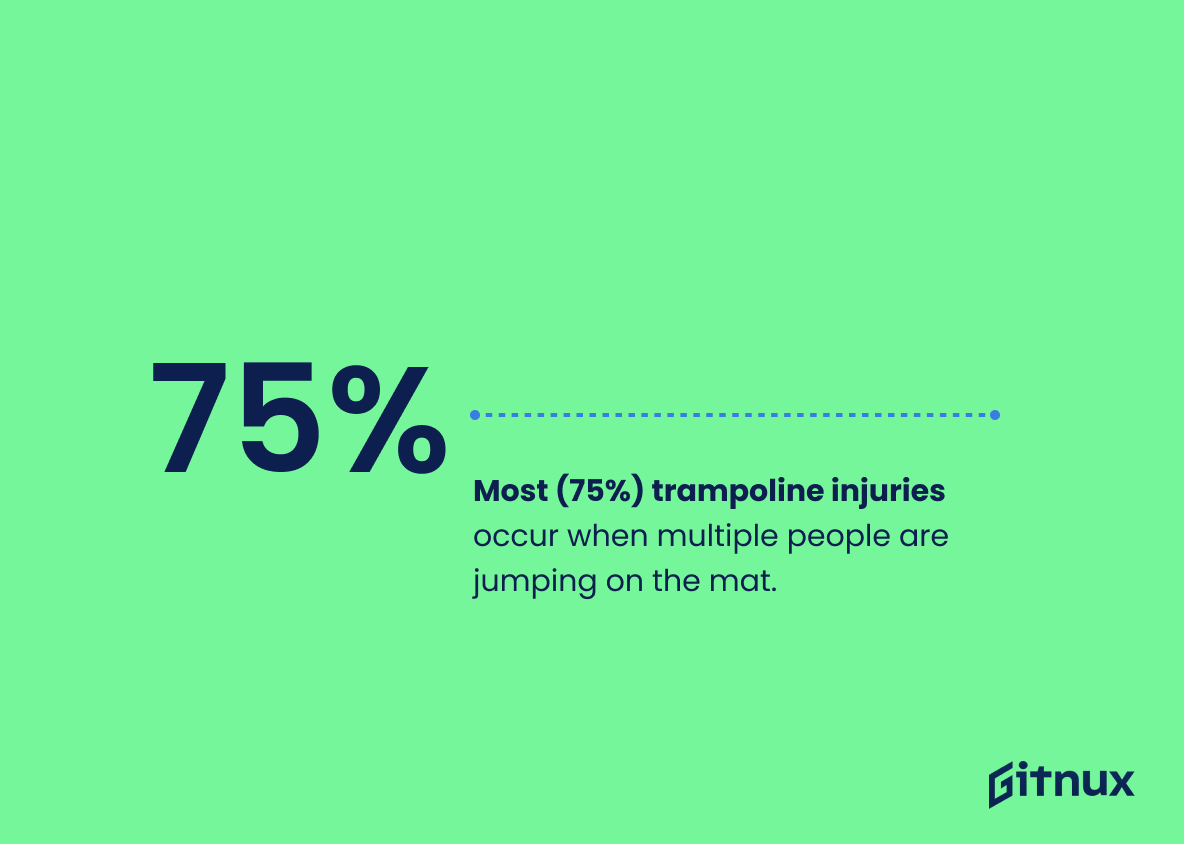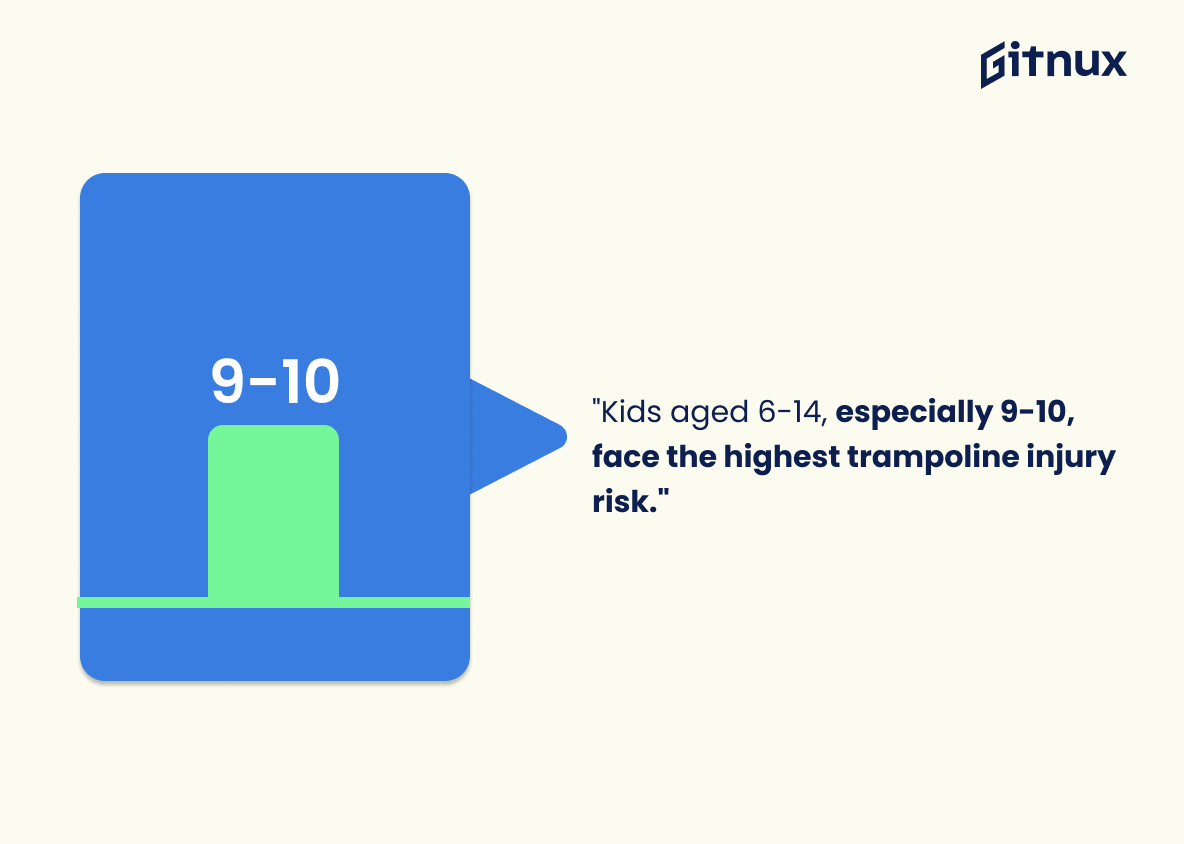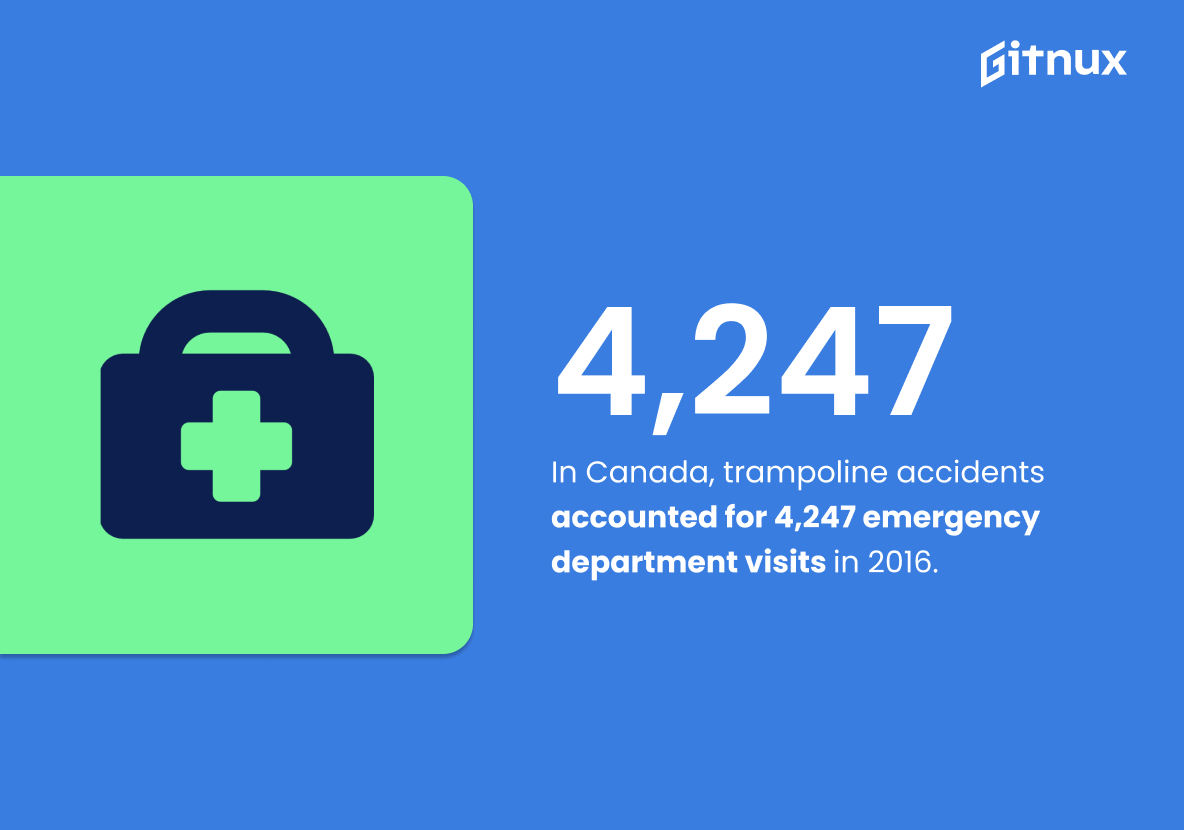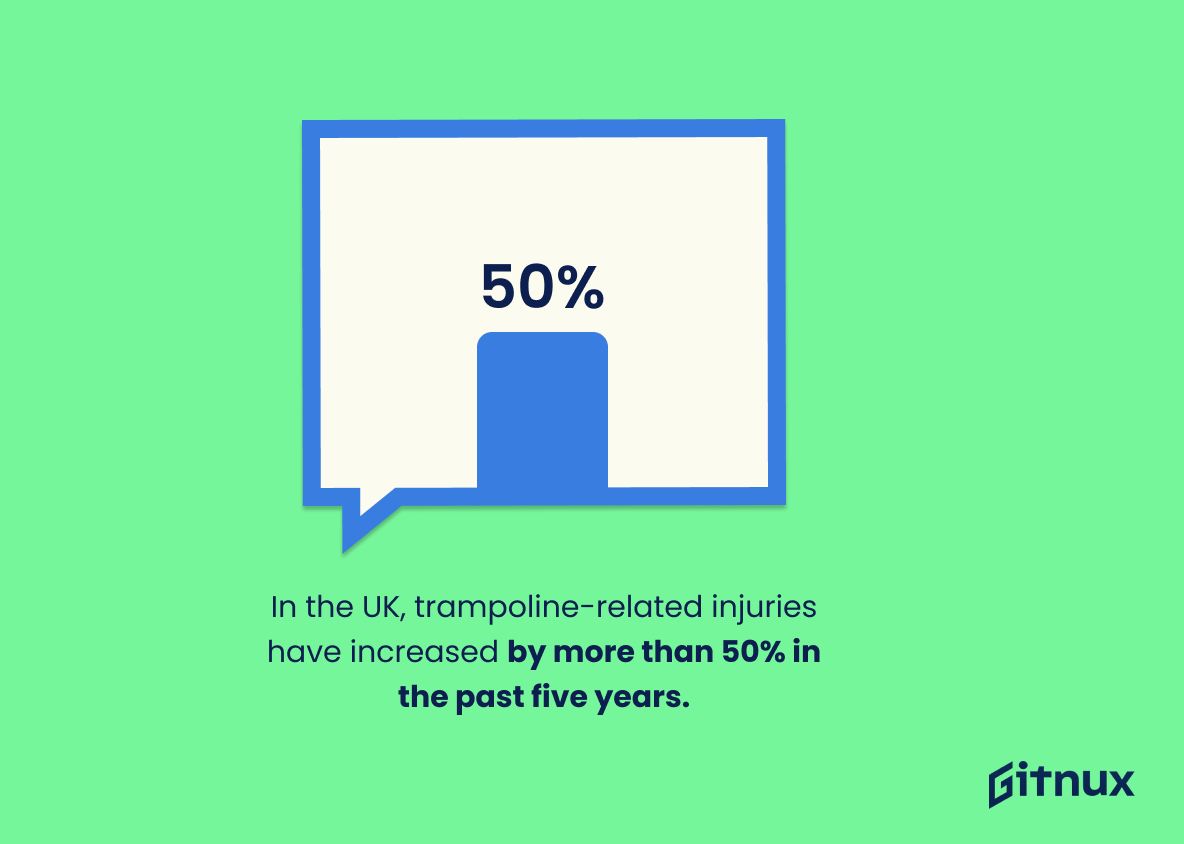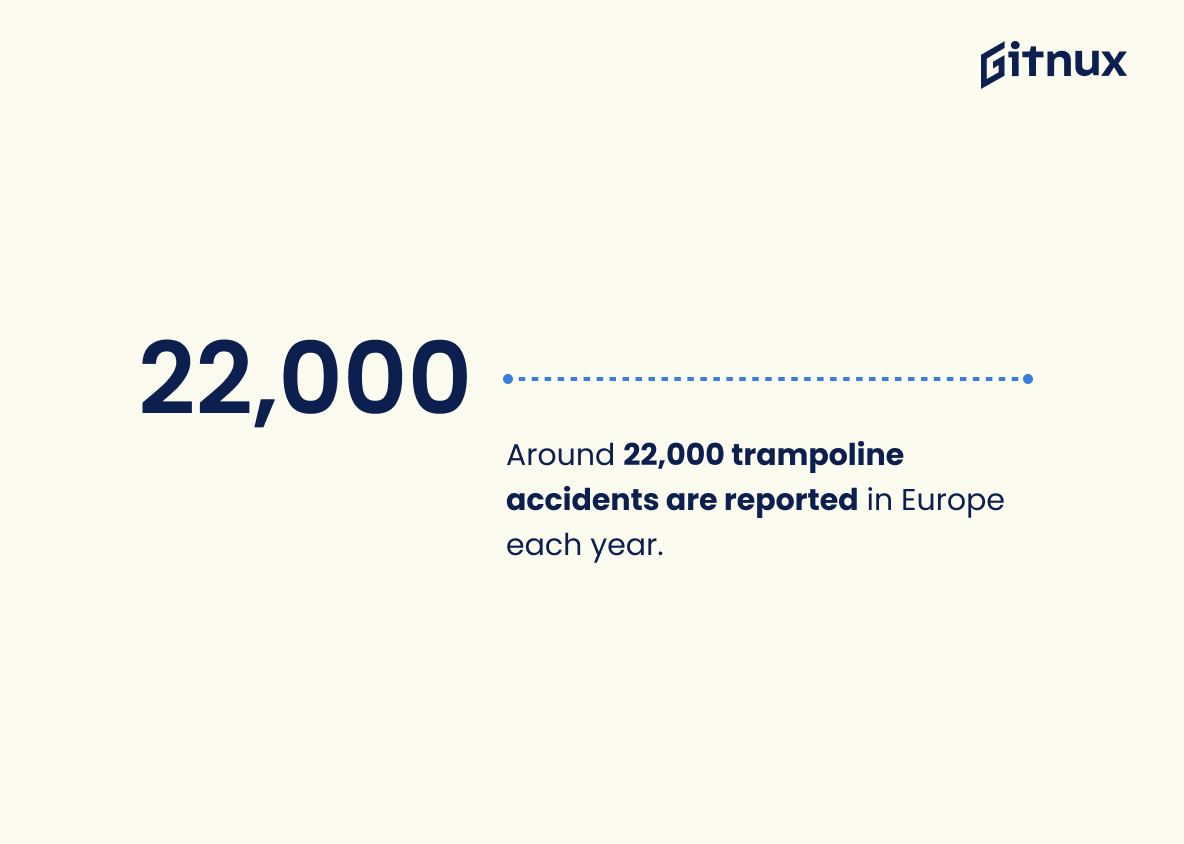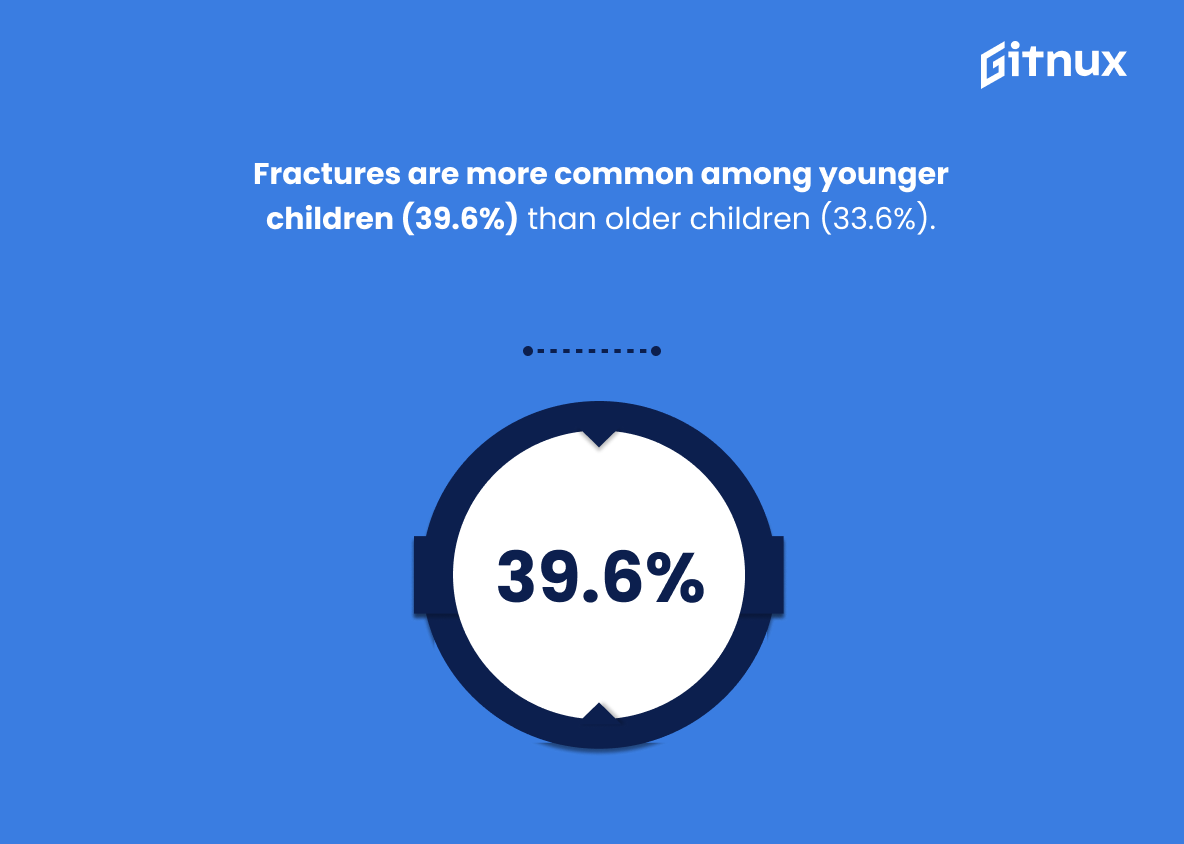Trampolines are a popular recreational activity for children and adults alike, but they can also be dangerous. According to the Centers for Disease Control and Prevention (CDC), approximately 100,000 trampoline-related injuries are treated in U.S. hospital emergency departments each year. Furthermore, about 1 out of every 200 trampoline injuries leads to permanent neurological damage while 22% of all trampoline injuries involve those under 6 years old. Additionally, over 70% of these accidents occur on home trampolines with 285,000 medically attended cases reported in 2014 alone; most (75%) occurring when multiple people jump at once.
Children aged 6 to 14 years represent the majority of injured individuals with 9% resulting in fractures or dislocations; 40% involving lower extremity trauma while females tend to have higher rates of upper extremity injury compared males who suffer more from lower limb traumas according to research studies conducted by various organizations such as American Academy Of Orthopaedic Surgeons (AAOS). In Australia nearly 440 children were hospitalized due to related incidents whereas Canada saw 4247 visits made during 2016 – both countries having seen an increase since 2002/2011 respectively. Europe reports around 22 thousand yearly whilst 20 percent being head & neck related issues which is why it’s important that safety measures should always be taken into consideration before jumping onto one. The estimated annual cost associated with this type of accident within America stands at $1 billion making it clear that prevention is key here so make sure you take necessary precautions if you’re planning on using a Trampoline anytime soon.
Trampoline Injuries Statistics Overview
Children under 6 years old represent 22% of trampoline injuries.
This statistic is a stark reminder that trampoline injuries are not just a problem for adults, but for children as well. It highlights the importance of taking extra precautions when allowing children to use trampolines, as they are more vulnerable to injury than adults.
Over 70% of trampoline injuries occur on home trampolines.
This statistic is a stark reminder that the majority of trampoline injuries occur in the home, highlighting the importance of taking safety precautions when using a trampoline. It serves as a warning to those who may be unaware of the potential risks associated with trampoline use, and encourages them to take the necessary steps to ensure their safety.
Most (75%) trampoline injuries occur when multiple people are jumping on the mat.
This statistic is a stark reminder of the importance of following safety guidelines when using a trampoline. It highlights the fact that the risk of injury increases significantly when multiple people are jumping on the mat, and that extra caution should be taken when multiple people are using the trampoline at the same time.
Children aged 6 to 14 years are the most frequently affected by trampoline injuries, and the injury rate is highest among children aged 9 to 10 years.
This statistic is a stark reminder of the dangers of trampoline injuries, particularly for children aged 9 to 10 years. It highlights the need for parents to be aware of the risks associated with trampoline use and to take appropriate safety measures to protect their children. It also serves as a warning to those who may be considering purchasing a trampoline for their children, as the risk of injury is highest among this age group.
In Australia, nearly 440 children are hospitalized each year due to trampoline-related injuries.
This statistic serves as a stark reminder of the potential dangers of trampoline use. It highlights the fact that trampoline-related injuries are a serious issue in Australia, and that parents should take extra precautions when allowing their children to use trampolines.
In Canada, trampoline accidents accounted for 4,247 emergency department visits in 2016.
This statistic serves as a stark reminder of the potential dangers of trampoline use. With 4,247 emergency department visits in 2016 alone, it is clear that trampoline injuries are a serious issue that should not be taken lightly. This statistic highlights the importance of taking proper safety precautions when using a trampoline, and serves as a warning to those who may be unaware of the risks associated with trampoline use.
In the UK, trampoline-related injuries have increased by more than 50% in the past five years.
This statistic is a stark reminder of the dangers of trampolining, highlighting the need for greater awareness and safety measures. It serves as a warning to those who may be unaware of the risks associated with trampolining, and emphasizes the importance of taking the necessary precautions to prevent injury. The sharp rise in trampoline-related injuries over the past five years is a cause for concern, and should be taken seriously.
Around 22,000 trampoline accidents are reported in Europe each year.
This statistic serves as a stark reminder of the potential dangers of trampolining, highlighting the importance of taking the necessary safety precautions when using a trampoline. It is a powerful illustration of the need to be aware of the risks associated with trampolining and to take the necessary steps to ensure that everyone is safe.
In 2013, the annual rate of trampoline injuries was 29.3 per 100,000 children in Australia.
This statistic serves as a stark reminder of the potential dangers of trampolining, particularly for children. It highlights the fact that trampoline injuries are a real and present risk, and that parents should take steps to ensure their children are safe when using trampolines. The statistic also serves as a call to action for trampoline manufacturers and retailers to ensure their products are safe and that proper safety guidelines are followed.
Fractures are more common among younger children (39.6%) than older children (33.6%).
This statistic is a stark reminder that trampoline injuries are a serious concern for younger children. It highlights the need for parents to be extra vigilant when it comes to supervising their children on trampolines, as the risk of fractures is significantly higher for younger children.
Conclusion
Trampoline injuries are a serious public health concern, with an estimated 100,000 trampoline-related injuries treated in U.S. hospital emergency departments each year and 1 out of every 200 leading to permanent neurological damage. Children under 6 years old represent 22% of trampoline injuries while over 70% occur on home trampolines. In 2014 there were over 285,000 medically attended trampoline injuries in America and 75% occurred when multiple people were jumping on the mat at once. The most frequently affected by these accidents are children aged 6 to 14 years old; 9% result in fractures or dislocations; 40% involve lower extremity injury; 440 children are hospitalized annually due to such incidents in Australia; female patients tend to have higher rates of upper extremity injury compared males who suffer more from lower extremities ones; 4,247 visits for this type of accident happened during 2016 alone Canada wide and between 2002 – 2011 more than one million went through ERs across US only because they had been hurt while using a trampoline . Additionally 20 %of all reported cases affect head/neck area , 94 % take place at private residences 39 .6 % younger kids get fractured whereas 33 .6 older ones do so as well ; lastly it is calculated that annual cost related with those types if mishaps reaches $1 billion mark within USA borders only All things considered , it is important for parents / guardians / caretakers etc.,to be aware about potential risks associated with recreational use of Trampline equipment
References
0. – https://www.safety.com
1. – https://www.athleticbusiness.com
2. – https://www.researchgate.net
3. – https://www.orthoinfo.aaos.org
4. – https://www.tandfonline.com
5. – https://www.injuryprevention.bmj.com
6. – https://www.canadasafetycouncil.org
7. – https://www.telegraph.co.uk
8. – https://www.nationwidechildrens.org
